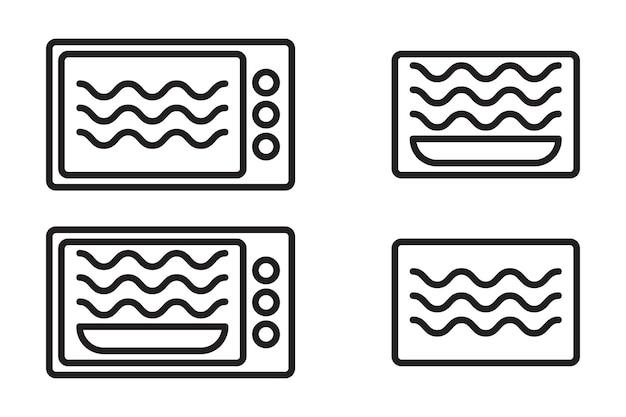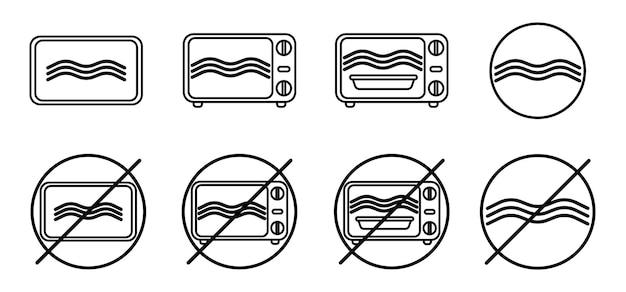Ramekins are a versatile and essential tool for any kitchen. These small, bowl-shaped dishes can be used for a variety of purposes, from serving individual desserts to creating perfectly portioned appetizers. But one question that often arises is whether all ramekins are oven safe.
In this blog post, we will explore the world of ramekins and delve into the important question of their oven safety. We will discuss the different materials commonly used to make ramekins, such as ceramic and porcelain, and uncover the factors that determine whether a ramekin can withstand the heat of the oven.
So, if you’ve ever wondered whether your favorite ramekins are oven safe or why your ceramic dishes sometimes crack, keep reading. By the end of this article, you’ll have a clear understanding of which ramekins are safe to use in the oven, and you’ll be ready to bake with confidence in 2023 and beyond.
Are All Ramekins Oven Safe
When it comes to cooking, ramekins are like the unsung heroes of the kitchen. These little baking dishes can be used for a wide variety of dishes, from individual desserts to savory appetizers. But there’s one burning question that every aspiring chef asks: Are all ramekins oven safe? Let’s dive into the world of ramekins and find out if they can handle the heat.
What Makes a Ramekin Oven Safe
Ramekins are typically made from different materials, such as porcelain, ceramic, or glass. While these materials are generally safe for oven use, not all ramekins are created equal. It’s important to check the manufacturer’s instructions to determine if your ramekin can withstand high temperatures. After all, nobody wants a kitchen disaster on their hands!
Heat Resistance is Key
When it comes to oven safety, heat resistance is key. Ramekins that are labeled as oven safe are designed to withstand high temperatures without cracking or shattering. These ramekins are usually made from high-quality materials that have been tested for thermal shock resistance. So, before you toss your favorite ramekin into the fiery depths of your oven, make sure it’s up to the task.
The Importance of Proper Care
Even if a ramekin is labeled as oven safe, it’s still essential to handle it with care. Sudden temperature changes can cause even the sturdiest ramekin to crack, so it’s best to let it cool down gradually. Avoid placing a hot ramekin directly on a cold surface or pouring cold liquid into a hot ramekin. Remember, proper care and handling can extend the life of your ramekin and ensure it remains oven safe for years to come.
A Ramekin’s Versatility
One of the best things about ramekins is their versatility. From classic crème brûlée to individual portions of mac and cheese, these little dishes can handle it all. Whether you’re a culinary genius or just getting started in the kitchen, ramekins can be your secret weapon for creating impressive and delicious dishes. So, if you’re ready to take your cooking to the next level, make sure you have a set of oven-safe ramekins in your culinary arsenal.
The Final Verdict
In conclusion, not all ramekins are oven safe. It’s important to read the manufacturer’s instructions and verify if your ramekins can handle the heat. Investing in high-quality, oven-safe ramekins will ensure that your culinary creations come out perfectly cooked and beautifully presented. So, the next time you’re in the market for ramekins, make sure to do your homework and choose ones that are oven safe. Happy cooking!
Note: Remember to always follow the manufacturer’s instructions and guidelines for safe usage of ramekins in the oven.
FAQ: Are All Ramekins Oven Safe
Welcome to our comprehensive FAQ guide on ramekins and their oven safety! We’ve compiled a list of questions and answers to demystify this culinary topic for you. So, let’s dive right in!
Can You Bake in Ceramic
Certainly! Ceramic is a great material for baking. It distributes heat evenly, ensuring that your creations come out perfectly cooked from every angle. Just remember that not all ceramics are oven-safe, so be sure to check the labels or manufacturer guidelines before popping them in the oven.
Why Is My Ceramic Cracking
Ah, the dreaded cracks! There could be a couple of reasons why your ceramic is cracking. One possibility is that there are small defects or imperfections in the ceramic itself, which can weaken the structure. Another reason could be sudden changes in temperature. Remember, ceramics prefer gradual heat changes rather than extreme temperature swings.
How Do You Know If a Bowl Is Oven Safe
The first rule of thumb is to check the label or packaging. If it explicitly states that the bowl is oven-safe, then you’re good to go. However, if there’s no information available, you can look for specific indicators like “ovenproof” or “heat-resistant” markings. Also, consider the material of the bowl – materials like ceramic, porcelain, or glass are commonly oven-safe.
Are All Porcelain Ramekins Oven Safe
Not all porcelain ramekins are created equal! While porcelain is generally a durable and oven-safe material, it’s still best to double-check the label or recommendations from the manufacturer. Some porcelain ramekins may have delicate embellishments or glazes that are not suitable for high oven temperatures.
Which Is Better to Bake In: Glass or Metal
Ah, the eternal debate! Glass and metal both have their merits in the world of baking. Glass conducts heat more slowly, making it ideal for dishes that require gentle, even baking. On the other hand, metal heats up quickly, making it perfect for crispy crusts and quick bakes. It ultimately depends on the specific recipe and your personal preference.
How High Can a Glass Pan Be in the Oven
Glass pans can handle a lot of heat, but it’s essential to avoid extreme temperature changes. Always consult the manufacturer’s instructions, but as a general rule, most glass pans can handle up to 450°F (232°C) in the oven. Just remember to avoid taking them directly from the oven and placing them on cold surfaces.
Do You Bake Longer in a Glass Pan
Since glass conducts heat more slowly than metal, you may need to adjust your baking time when using a glass pan. It’s usually recommended to increase the baking time by about 10-15% when using glass bakeware. Keep a close eye on your creation and use a toothpick or cake tester to check for doneness.
Can Aluminum Foil Go in the Oven
Yes, aluminum foil can go in the oven! It’s a versatile kitchen companion, providing an extra layer of protection for your dishes and making cleanup a breeze. However, be cautious not to let the foil come into direct contact with acidic or salty foods, as this can cause a reaction and affect the taste.
Can You Bake in a Ramekin
Absolutely! Ramekins are perfect for creating individual-sized dishes, desserts, or baked goods. They’re versatile, allowing for both sweet and savory creations. From delicious crème brûlée to savory pot pies, ramekins can handle it all!
Can Target Ramekins Go in the Oven
Target ramekins, like any other ramekins, can generally go in the oven. However, it’s important to examine the label or packaging to ensure they are indeed marked as oven-safe. Always follow the guidelines provided to avoid any mishaps in the kitchen.
Can Microwavable Bowls Go in the Oven
Not all microwavable bowls are suitable for the oven. While they may withstand the microwave’s heat, they might not be able to handle the higher temperatures of the oven. To be on the safe side, check the label or packaging for any indications of oven-safe materials before attempting to bake in them.
What Pans Can Go in the Oven
Many pans can go into the oven, including stainless steel, cast iron, enamel-coated, and certain non-stick pans. However, it’s crucial to check the manufacturer’s instructions for the specific pan you’re using. Some pans may have plastic or wooden handles that are not oven-safe and should be removed before baking.
How Do I Know If My Ramekin is Oven Safe
Check for any markings or labels on your ramekin that indicate oven safety. Look for phrases like “ovenproof” or “oven safe” on the packaging or the ramekin itself. If you’re unsure, consult the manufacturer’s guidelines or reach out to their customer service for confirmation.
Why Do Ceramic Baking Dishes Crack
Ceramic baking dishes can crack for a variety of reasons. One common cause is thermal shock, where the dish experiences sudden and extreme temperature changes. Another reason could be placing the dish under the broiler or subjecting it to high heat without precautionary measures. It’s always best to follow the manufacturer’s recommendations to prevent these unfortunate cracks.
What Temperature Does Ceramic Crack
Ceramics are generally heat-resistant, but they do have their limits. While it depends on the specific type and quality of the ceramic, most ceramics will start showing signs of stress or cracks at temperatures above 1,000°F (538°C). However, for everyday cooking and baking, you’re unlikely to reach those extreme temperatures.
How Hot Can You Bake a Ramekin
Ramekins are designed to withstand the temperatures typically used in baking. They can handle high temperatures up to 500°F (260°C) without any issues. So, feel free to bake to your heart’s desire, from molten lava cakes to delightful soufflés!
What Can I Use Instead of a Ramekin
If you don’t have ramekins on hand, fear not! There are alternatives you can use. Small oven-safe dishes, such as custard cups or oven-proof mugs, can work well. Additionally, you can consider using individual-sized baking pans or even muffin tins, depending on the recipe.
Can You Put Ceramic Clay in the Oven
Ceramic clay is designed to be kiln-fired rather than baked in a conventional oven. It requires high and consistent temperatures to achieve the desired results. If you’re working with ceramic clay, follow the instructions provided by your supplier and use an appropriate kiln for firing.
What Size Ramekin is Most Versatile
When it comes to ramekins, versatility is the name of the game! A standard 4-ounce ramekin is often considered the most versatile size. It’s perfect for individual servings of custards, crumbles, soufflés, and a wide variety of other delectable dishes. However, feel free to experiment with different sizes to fit your specific needs.
What is the Best Size Ramekin
The best size ramekin depends on what you’re planning to bake or serve. If you’re aiming for a single dessert portion, a 4 to 6-ounce ramekin is commonly used. For individual sides or appetizers, you might opt for a smaller 2 to 3-ounce ramekin. Consider your recipe and portion size when selecting the ideal ramekin.
Can Porcelain Go in the Oven
Yes, porcelain is generally oven-safe, provided it is specifically labeled or indicated as such by the manufacturer. Porcelain ramekins, dishes, or other cookware made for oven use can withstand high temperatures without any problems. Just remember to avoid sudden temperature changes to keep your porcelain in good shape.
What Does “Oven Safe” Mean
When an item is labeled or described as “oven safe,” it means that it can safely be used in conventional ovens without any adverse effects. Oven-safe products are designed to withstand the temperatures typically encountered during cooking or baking processes. However, it’s always a good idea to double-check the manufacturer’s guidelines for specific temperature limits and usage instructions.
We hope this FAQ guide has shed some light on the ultimate question of ramekin oven safety! Remember to prioritize the guidelines provided by manufacturers to ensure the best baking experience. Happy baking!

